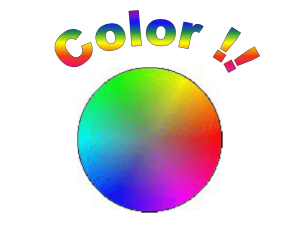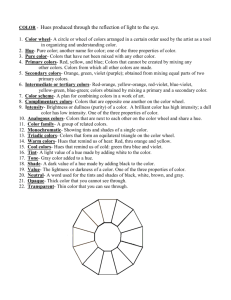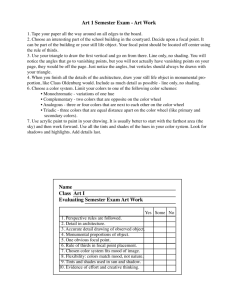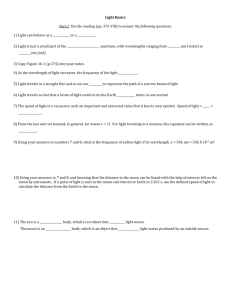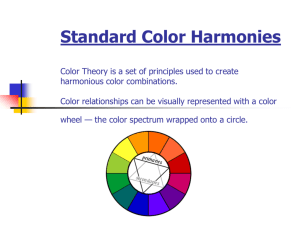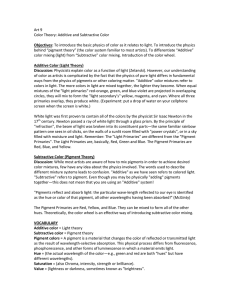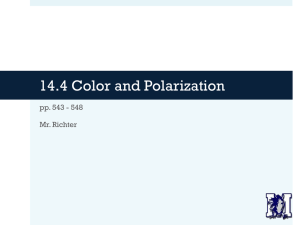Color
advertisement
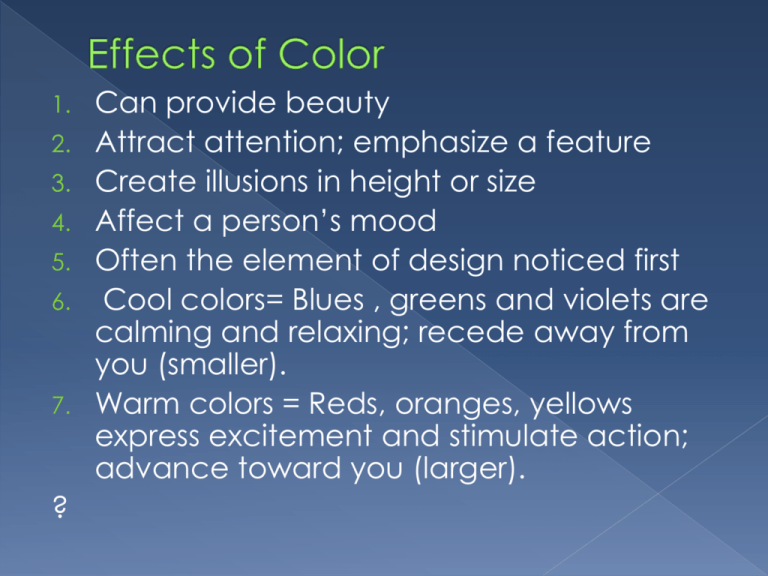
1. 2. 3. 4. 5. 6. 7. ? Can provide beauty Attract attention; emphasize a feature Create illusions in height or size Affect a person’s mood Often the element of design noticed first Cool colors= Blues , greens and violets are calming and relaxing; recede away from you (smaller). Warm colors = Reds, oranges, yellows express excitement and stimulate action; advance toward you (larger). All objects contain pigment, substances that absorb some light rays and reflect others When light strikes an object, you see only the colors that reflect or bounce back to your eyes. When light rays are absorbed the color is not seen. Ex: If a fabric looks blue, it is because the fabric dye absorbs the other light rays EXCEPT blue. Primary colors- red, yellow, blue – the basic colors from which others are made Secondary colors- green, orange, violet – combination of equal parts of 2 primary colors Tertiary or intermediate colorscombination of 1 primary and 1 secondary Value – Adding white or black to a color changes its value. › Tint – a color lightened with WHITE › Shade – a color darkened with BLACK Ex. Red medium tone Red + white = PINK Red + black = BURGANDY Bright, deep, vivid colors contain the most pigment = very intense. Emerald green or ruby red. Dull, muted colors contain less pigment = softer effect. Dusty rose or khaki green. Not on the color wheel – don’t have pigment! Black – ALL light rays absorbed; great for cold weather White – ALL light rays reflected; great for warm weather Complementary colors- colors that are directly opposite each other on the color wheel Compliment of blue? 1st Finish Color Schemes notes/Mini Color Wheels; BOOK pgs 164-165 2nd Use magazines to find 5 color schemes in clothing: Border each ½ sheet paper Label Color Scheme Find example of Color Scheme Color mini color wheel to match pic-YELLOW at 12 o’clock Glue Picture + mini color wheel on paper Tape together this order: 1. 2. 3. 4. 5. monochromatic analogous complementary split complementary OR triadic neutral or accented neutral




